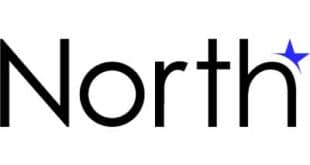The press is filled with dire warnings about a disruptor leading to the demise of the bank and card payments system. It is true that only a small portion of disruptive new entrants are fatal, but the fact that disruptors usually are not fatal doesn’t mean they aren’t damaging at the margin. Non-fatal disruptors do—and will continue to—siphon off segments of the payments business. What’s needed is to rapidly determine if the new kid on the block is merely annoying or potentially dangerous.
Fortunately, the history of innovation can be plumbed and principles for distinguishing disruptors from grim reapers can be abstracted.
Many innovations looked like they would totally eliminate old technologies, but never did. The microwave has not displaced the standard oven. Kitchens today come with both. Electric cars have been around for decades but have barely touched the sales of gasoline-powered cars. Nor did the submarine eliminate surface warships.
A more subtle pattern can also be observed. Many things that were invented to do a particular function ended up disrupting, sometimes fatally, a different function that was totally unimagined at the time of the innovation. The steam engine was invented to pump water out of coal mines. It ended up disrupting the stage coach out of business. The elevator was invented to move goods, not people. When repurposed to move people, it totally changed urban architecture by making the skyscraper possible.
The intended use of the telephone was for desk workers to communicate across the room or down the hall without having to get up and walk to the other end of the conversation. And the microwave? It was being invented as a communication technology when someone left her lunch in front of the magnatron and returned to find it cooked.
Part of the difficulty of guessing what some new technology will end up being used the most for is that it can take a long time to figure out the best use for it. Glass was around for centuries before the glazed window was invented, for example.
When disruption comes to previously stable or only slowly changing industries, the colonization process reflects what one often sees in a Petri dish. The first wave of the disruptor takes root quickly in scattered sites where the existing environment provides attractive niches. After that, the process slows noticeably. We see the same with technological disruption. The attractive niches are rapidly taken over. Follow-on versions of what is essentially the same type of disruptor face a far more difficult task. Only rarely is the new organism fatal to all of the cells in the dish.
As the lucrative niches in payments become occupied, more and more new payments will face “whole enchilada” breakeven points where the minimum survivable market share is essentially the entire market.
How might we be able to assess, quickly and at first encounter, if a payments innovation is an existential threat or just a disruptor? Five questions derived from the history of innovation can help estimate a payments innovation’s degree of threat to existing payment methods.
– Is its real use likely to not be what it was intended for?
– Is it a first instance of something that will likely be improved by its customers’ use of it?
– Is it patentable and defendable in court?
– Is the breakeven volume reasonable for the market?
– Can it compete after it becomes regulated?
If the answer is “Yes” to only one or two of these, the innovation is most likely merely a disruptor. If the answer to more than three of these is yes, we may be looking at a fatal threat.
DISRUPTIVE
Changes customer behavior
Diverts a part of all payments, or the entirety of some of payments
Reduces operating cost
May include other banking services besides payments
Changes who is favored and disfavored by regulation
FATAL
Eliminates customers
Makes payments without involving a financial institution at all
Operates at costs too low to compete against
Embeds payments within non-payments business functions
Can remain unregulated
—George Warfel • georgegwarfel@aol.com




